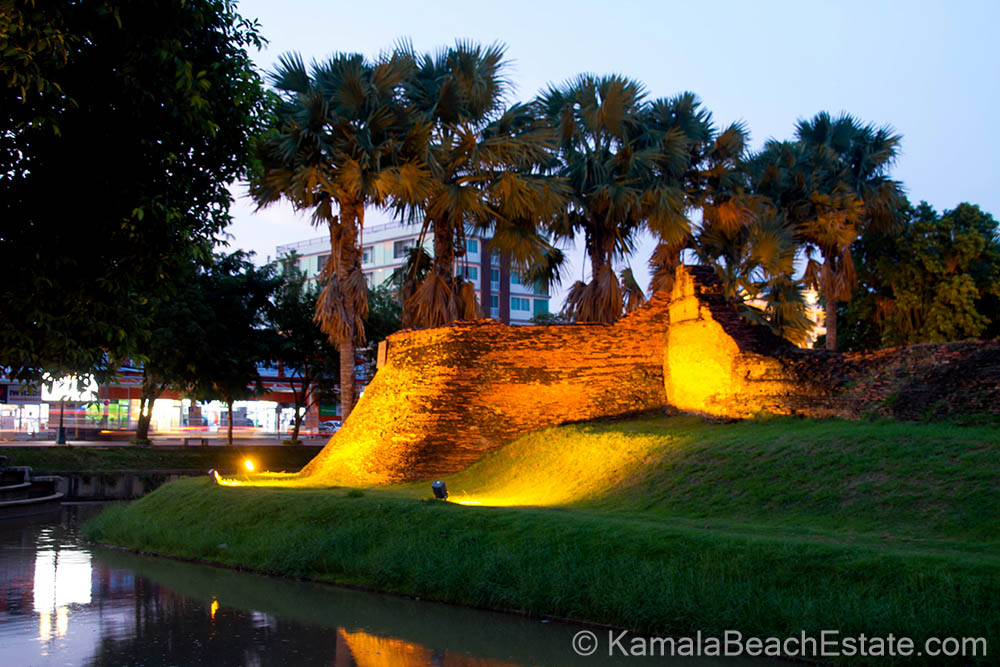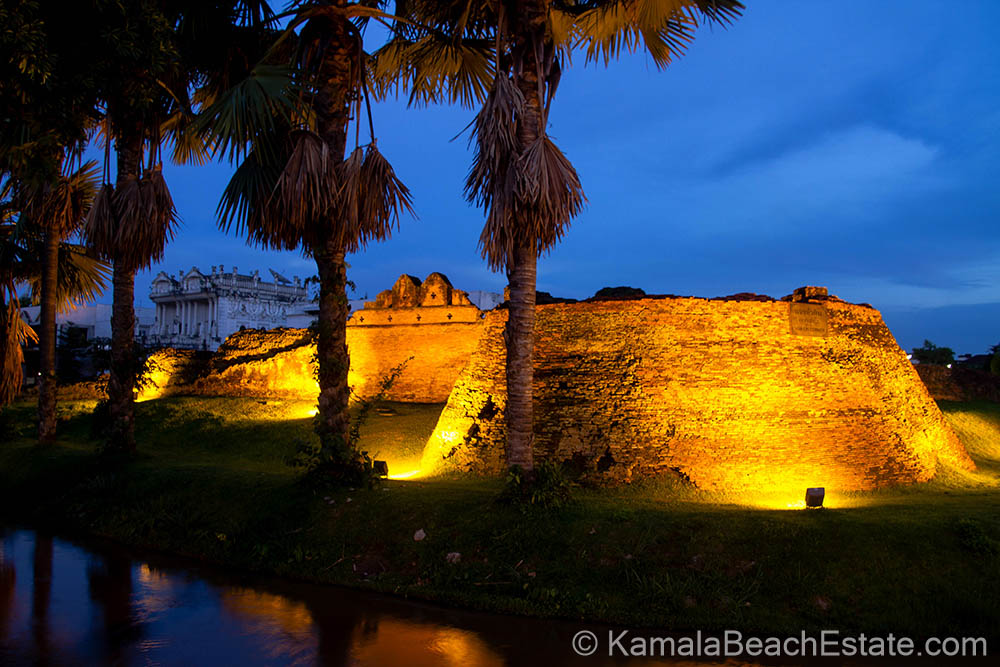Chiang Mai City Moat Explore the Timeless Charm
Chiang Mai City moat, a defining feature of the city’s historic core
The Old City is famous for its ancient walls and the waterway that surrounds it. Visitors are drawn to this captivating area to experience a seamless blend of Lanna culture, ancient temples, and the lively atmosphere of modern Chiang Mai. This article delves into the intriguing history of the Old City moat and walls, highlighting their significance in shaping the city’s identity and offering essential tips for an unforgettable visit to the walled city. Whether you’re fascinated by the historical ruins, the peaceful waters, or the vibrant life within the Old City, this is a journey well worth embarking on.
The Ancient Heart of Chiang Mai: What is the Old City?
Chiang Mai’s Old City is the historical center of this vibrant Northern Thai metropolis, originally established in 1296 by King Mengrai as the capital of the Lanna Kingdom, which is now part of the city. The Old City, with its distinctive square shape, is surrounded by a moat and remnants of ancient walls that once protected the city from invaders. Walking through this area feels like stepping back in time, as the Old City is filled with historic landmarks, including temples, traditional Lanna architecture, and quaint alleyways.
How Did Chiang Mai’s Moat and Walls Come to Be?
The origins of Chiang Mai’s moat and walls date back to the city’s founding in the 13th century. These structures were built to defend the city of Chiang Mai from potential threats, including raids from neighboring kingdoms across the moat. The moat, a 1.6-kilometer rectangular body of water, encircles the entire Old City. The walls, though mostly in ruins now, still stand in parts, particularly around the city gates such as Tha Phae Gate, Suan Dok Gate, and Chang Phuak Gate. The construction of the walls and moat was a critical part of Chiang Mai’s strategic defense system, contributing to the city’s survival through numerous conflicts.
What Remains of the City Moat Today?
Today, the moat still functions as a defining feature of Chiang Mai’s landscape. Its cool waters, shaded by trees and flanked by small parks, provide a serene backdrop to the bustling activity of the modern city. Although its original purpose as a defensive structure has faded, the moat now serves a contemporary function as a scenic element, contributing to the city’s charm and tranquility. The water adds a sense of calm, especially in the early mornings when the air is crisp and the city begins to stir. On the east side, near Tha Phae Gate, visitors often enjoy walking alongside the moat or relaxing in nearby cafes.
How Important Were the City Walls?
The city walls played a crucial role in protecting Chiang Mai during its turbulent history, serving as a defense mechanism for the walled city. Though only parts of the walls remain standing, they offer a glimpse into the city’s past. The most well-preserved sections can be found near the gates, particularly around Tha Phae Gate and Chang Phuak Gate. These walls, constructed from brick and stone, were once formidable barriers that kept invaders at bay. While much of the original structure has eroded over the centuries, the walls remain an iconic symbol of the Old City.
What Role Do Chiang Mai’s Gates Play?
Chiang Mai’s Old City has five main gates, with Tha Phae Gate being the most famous and well-preserved. This eastern gate once served as a primary entry point to the city and remains a bustling hub for tourists and locals alike. Suan Dok Gate on the west side, Chang Phuak Gate to the north, and Chiang Mai Gate to the south also hold historical significance. Each gate offers unique views of the Old City and its surroundings. Today, these gates are not just historical landmarks but also social spaces where cultural events like the Chiang Mai Flower Festival and Songkran celebrations take place around the moat.
What Can You Expect to See Within the Old City?
Inside the Old City, visitors can explore numerous temples (or “wats”) that reflect Chiang Mai’s rich Buddhist heritage. Some of the most famous temples include Wat Phra Singh and Wat Chedi Luang, which are landmarks of the city’s religious life. The area is also home to vibrant markets, like the Sunday Night Market, where you can find local handicrafts, street food, and souvenirs. The Old City’s narrow streets are perfect for leisurely exploration, allowing you to discover charming cafes, quiet courtyards, and traditional Thai homes.
How Can You Explore the Old City Moat in Chiang Mai?
One of the best ways to explore the Old City of Chiang Mai and its moat is by walking or biking around the perimeter. The moat spans approximately 6.4 kilometers, making it a manageable yet enriching walk that offers views of the walled city from different angles. A popular route is to start at Tha Phae Gate and proceed counter-clockwise around the moat of the city of Chiang Mai. As you walk, you’ll pass each of the main gates, ancient ruins, and lush parks. Biking is also an excellent way to take in the sights, allowing for a breezy tour with stops at landmarks along the way.
What Cultural Events Take Place Near the City Moat?
Chiang Mai is known for its vibrant festivals, many of which are centered around the Old City and its moat, making it an exciting part of the city. During Songkran, the Thai New Year, the Chiang Mai moat becomes the focal point for water battles, where locals and tourists engage in playful water fights around the moat. The Chiang Mai Flower Festival, held every February, transforms the Old City into a colorful spectacle of floral displays, with many activities taking place near the city gates and along the moat. These festivals provide an immersive experience of Chiang Mai’s cultural life and traditions.
What Are the Best Times to Visit Chiang Mai’s Old City Moat?
The best time to visit Chiang Mai and explore the Old City moat is during the cooler months, from November to February. This period offers a pleasant climate, with cool breezes making it ideal for walking around the city. Early mornings or late afternoons are the best times to enjoy the moat, as the heat is less intense, and you can see locals going about their daily routines. Whether you’re visiting to learn about history or simply to relax by the water, the moat area offers a unique perspective on the city’s blend of old and new.
How Does the Moat Reflect Chiang Mai’s Identity?
Chiang Mai’s moat and walls are more than just remnants of the past; they represent the city’s enduring connection to its history and cultural heritage. The moat, in particular, has evolved from a defensive structure to a cherished part of the city’s landscape and community life. It frames the Old City in a way that invites both reflection on its storied past and appreciation of its vibrant present. Whether you are walking along the moat, marveling at the ancient gates, or participating in one of the city’s many festivals, the moat serves as a symbol of Chiang Mai’s ability to blend tradition with modernity.
Key Takeaways:
- Chiang Mai’s Old City moat and walls date back to 1296 when the city was founded as the capital of the Lanna Kingdom.
- The moat, a 1.6-kilometer rectangular body of water, surrounds the Old City and remains a key feature of Chiang Mai’s landscape.
- While much of the original walls are now in ruins, the gates like Tha Phae and Suan Dok still stand as significant landmarks.
- The best way to explore the Old City moat is by walking or biking around its 6.4-kilometer perimeter, stopping at historical sites along the side of the moat.
- Chiang Mai’s moat is the focal point of major cultural events such as Songkran and the Chiang Mai Flower Festival, blending historical significance with vibrant community life in the old city of Chiang Mai.
By exploring Chiang Mai’s moat and Old City walls, visitors can immerse themselves in the rich history and dynamic culture that makes the city of Chiang Mai a must-visit destination in Thailand.













